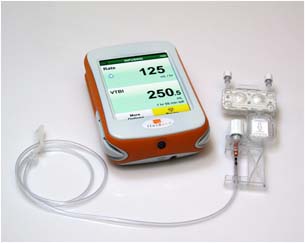Latest News
May 28, 2010
By Anthony J. Lockwood
Dear Desktop Engineering Reader:
 |
Desktop Engineering’s newest Fast Apps quick-read applications stories are now available on-line. Here’s your monthly quick run down.
Foster-Miller designs and analyzes everything from aircraft launchers to food manufacturing equipment to medical devices. We’re talking multiple standards compliances, detailed product histories, arduous approval routing, SOPs galore, and tons of AutoCAD, Excel, MS Project, SolidWorks, Visio, Word files – the whole shebang. So, the company turned to Adept software from Synergis Software to manage its documents and processes and everything was great. Um, no, not at first. Staff pushback. But Adept’s flexibility overcame even that obstacle. Read more ...
OK, now this one is great fun. Pressure body-mapping technology. Yep. Sensor Products makes Tactilus, a system and a technology for mapping the surface pressure your body exerts stretching out in bed, grabbing a golf club, and, really, whenever you touch a surface. It helps you use the data it collects to change designs to distribute pressure in ways that make your product more ergonomic, comfy, and efficient. Sensors, signal conditioning electronics, analysis software, toothpaste tubes, and kids in Salt Lake City sitting on a pressure pad. Read it.
I am a fan of reverse engineering hardware and software. Simply put, what you engineers do with it amazes me. The third Fast App this month is a good example. R-Design Studio had to re-design the suspension arm for a radio-controlled, one-eighth scale racing car model. So, they scanned it and dumped the data into Geomagic Studio, which they used to extract design intent – features like cylinders, cones, spheres, and revolved surfaces. They then used Geomagic’s Parametric Exchange to transfer geometry directly from Geomagic Studio to SolidWorks – no STEP or IGES. Toss in some FEA, a dash of digital to physical printing, and, before long, they had a new suspension arm. Check this one out.
Medical device manufacturing is an exacting business. Fluidnet was developing a small yet full-featured IV infusion pump. They needed to find a way to adjust fluidic resistance within the pump’s flow path; however, they could not find stock resistive valves that would provide control over the entire range of flow rates. So, Fluidnet came up with a concept for a custom flow resistor to perform over the full range of flow rates. How to get idea to reality? Engineers at the company used CFdesign to quickly iterate design versions and tweak dimensions to obtain the desired performance. When prototypes were tested, actual performance almost exactly matched the results predicted by CFdesign. Read about it.
See you next time with more Fast Apps. Thanks, Pal.— Lockwood
Anthony J. Lockwood
Editor at Large, Desktop Engineering
Subscribe to our FREE magazine, FREE email newsletters or both!
Latest News
About the Author
Anthony J. Lockwood is Digital Engineering’s founding editor. He is now retired. Contact him via [email protected].
Follow DE





